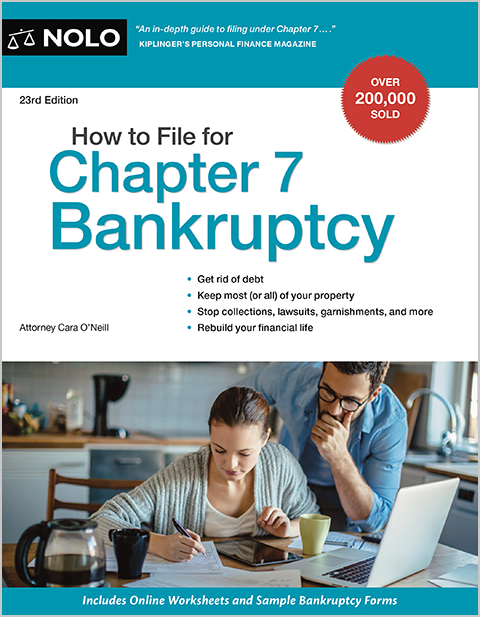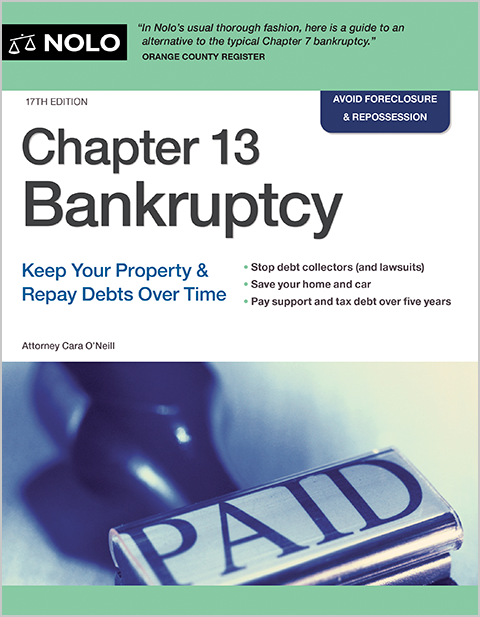When you file for bankruptcy, you must list all of your creditors and their addresses on the creditor mailing list or mailing matrix. This notifies them of the bankruptcy and automatic stay.
When you file for Chapter 7 or Chapter 13 bankruptcy, one of the forms you must prepare is the creditor mailing list (sometimes called the creditor matrix or list of creditors). The creditor mailing list includes the names of your creditors and their mailing addresses.
The bankruptcy court uses the list to provide all required notices to your creditors during your case. Failing to file it correctly can cause problems with your discharge. Read on to learn more about the creditor mailing list, why it is important, and how to file it correctly.
- How to Complete Bankruptcy Paperwork
- What Is a Bankruptcy Creditor Mailing List or Creditor Matrix?
- Creating a Creditor Matrix Mailing List in Bankruptcy
- How Is the Creditor Mailing List Used?
- What If the Creditor Mailing List Is Inaccurate?
- How to File Your Creditor Mailing List Correctly
- Need More Bankruptcy Help?
How to Complete Bankruptcy Paperwork
A bankruptcy case starts when you complete and file a packet of official bankruptcy forms. The primary form, called the petition, tells the court which chapter you intend to file and other identifying information, like your name and address. Details about your financial situation, including income, debts, creditors, and property, are listed in additional "schedules."
For more information, see How to Fill Out Bankruptcy Forms.
What Is a Bankruptcy Creditor Mailing List or Creditor Matrix?
You'll file your creditors' names and addresses on a "creditor matrix" along with the completed bankruptcy forms and schedules. The matrix is essentially a document formatted for printing mailing labels.
The court uses the matrix to create a mailing list of your creditors. Also, the list will be made available online through Pacer, the court's online case management system. All bankruptcy participants can use the list to print mailing labels for required notifications, such as the setting of motions and hearings (more below).
Creating a Creditor Matrix Mailing List in Bankruptcy
The creditor matrix is not an official bankruptcy form. The format depends on your particular court, but you'll create it like you would a mailing label template. Contact your local court or consult the court's website for instructions on making it.
How Is the Creditor Mailing List Used?
The court will use the creditor mailing list to notify creditors of your bankruptcy case and alert your creditors to the automatic stay order that prohibits most creditors from continuing collection actions. The bankruptcy court also relies on your creditor mailing list to send out the time and place of your meeting of creditors—the one hearing all filers must attend—and other important information.
You or a creditor can also use it to quickly obtain necessary addresses when you need to provide notification about an upcoming motion or similar event. Also, debtors often use the list after amending a schedule or Chapter 13 plan proposal.
What If the Creditor Mailing List Is Inaccurate?
Incorrectly filing your creditor mailing list can lead to delays in completing your bankruptcy, problems with your discharge, and more expenses related to fixing these issues.
Generally, if you fail to list a debt in your bankruptcy, it won't get discharged. Even if you list a debt in your bankruptcy but don't include it or incorrectly identify the creditor on your mailing list, that creditor might have grounds to object to your discharge (even after your case is closed) based on a lack of notice. In that case, you might incur additional fees to respond to the objection or amend your bankruptcy.
Further, a creditor who doesn't receive notice of your bankruptcy might continue garnishing your wages or otherwise collect on its debts.
How to File Your Creditor Mailing List Correctly
You'll file the creditor matrix along with your other bankruptcy paperwork. Each bankruptcy court has rules and procedures for preparing and filing the creditor mailing list.
You or your attorney must follow the court's specific formatting instructions to ensure proper processing. If you are filing on your own, you can obtain information from your local bankruptcy court. Use the United States Courts Court Locator tool to find your local bankruptcy court's website.
Need More Bankruptcy Help?
Did you know Nolo has made the law easy for over fifty years? It's true—and we want to ensure you find what you need. Below you'll find more articles explaining how bankruptcy works. And don't forget that our bankruptcy homepage is the best place to start if you have other questions!
|
Our Editor's Picks for You |
|
|
More Like This |
|
|
Consider Before Filing Bankruptcy |
Chapter 7 Bankruptcy: Who Can't File? Your Obligations Under Chapter 13 Steps in a Typical Chapter 13 Case |
|
Helpful Bankruptcy Sites |
We wholeheartedly encourage research and learning, but online articles can't address all bankruptcy issues or the facts of your case. The best way to protect your assets in bankruptcy is by hiring a local bankruptcy lawyer.
- How to Complete Bankruptcy Paperwork
- What Is a Bankruptcy Creditor Mailing List or Creditor Matrix?
- Creating a Creditor Matrix Mailing List in Bankruptcy
- How Is the Creditor Mailing List Used?
- What If the Creditor Mailing List Is Inaccurate?
- How to File Your Creditor Mailing List Correctly
- Need More Bankruptcy Help?

